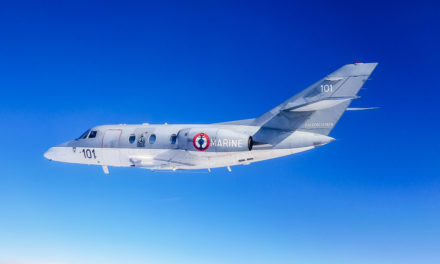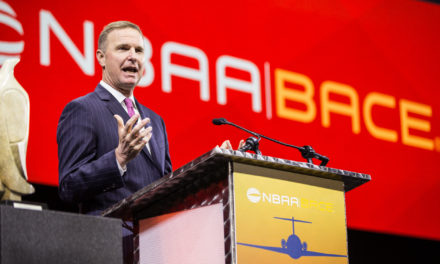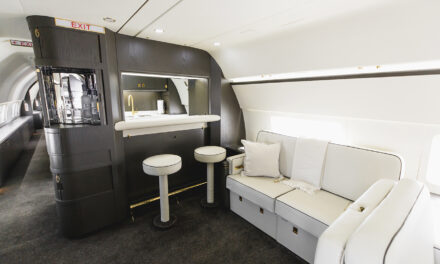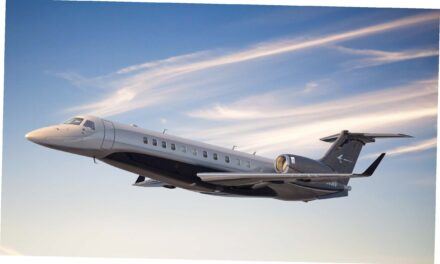By Fred Vergnères
For more than six decades, the name Burnet Interiors has been closely linked to the world of cabins and their renovation. The workshops that once made the company’s reputation, and which have unfortunately disappeared in the meantime, have now been transformed into a unique center of competence, which is passed on daily by Franck Burnet. Franck Burnet has capitalized on all the experience of the family business to better develop a role as a project manager and advisor to the various players in the business aviation sector. This approach combines his experience in the field with his knowledge of the main players in this sector. A renaissance which, beyond the name, is above all a sign of a return to the demand for quality in cabin renovations. Interview.
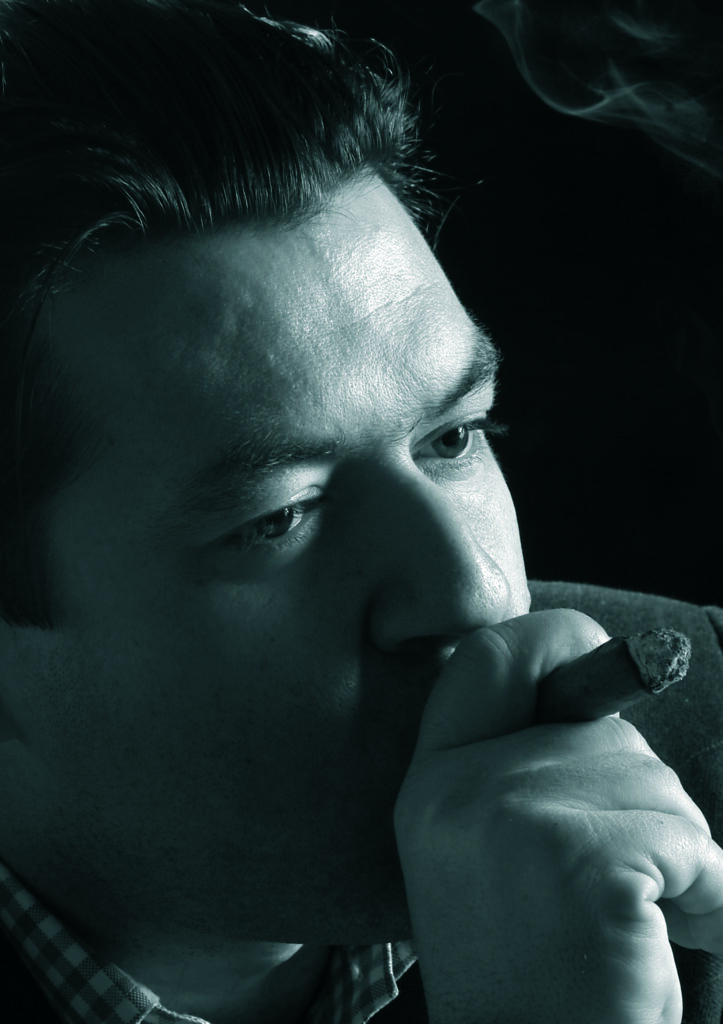
– How did the rebirth of Burnet Interiors in 2021 come about?
The name Burnet is closely linked since 1966 to the interior design of business aircraft and their renovation. The entity, Burnet Interiors S.A., which since the end of the 2000s had as a co-partner the company TAG Aviation up to 50%, to sell in 2013 all its family shares to the latter. TAG Aviation has integrated this entity into its maintenance division to make it a department. At the same time, the company invited me to assist them in the commercial development of this activity. These seven years at TAG Aviation were a rich experience on many levels since they allowed me to discover the functioning of an MRO but also to see the difficulties of integrating the subject of cabin refurbishment in its discussions with operators and other CAMOs. After this experience, and following my dismissal in 2020 by the company as a result of the Covid-19 and a difficult economic situation, it seemed appropriate to me to return to my profession and to offer my expertise on the cabin trades to operators, owners, buyers and sellers of aircraft in order to accompany them on this subject which sometimes seems taboo.
So I started from scratch, with the name of the company Burnet Interiors as a starting point; a name that has always been synonymous with a high quality of work, respect of deadlines and a real transparency with the customers. In addition to the name, I have of course taken our original logo with the wings and our initials of the company name. The only difference is that today I don’t have a workshop to realize these interior works, but I can, once again, accompany my customers by offering them the same enthusiasm as when we had our workshops. The form changes. Not the content.
– What are the solutions that Burnet Interiors offers on the market today?
Today my positioning is very simple. I accompany the customer, the client, in the best possible way so that at the end of his cabin work, and whatever the size of the project, he can have the result expected at the very beginning of our discussions. One of my objectives is to be able, through and thanks to the CAMO and/or the technical manager in charge of the aircraft, to establish a cabin work schedule, which would merge with this schedule. And this, without increasing the downtime of the aircraft during this maintenance.
If we take the case of an aircraft which would have a maintenance of type “C check” planned in the next 4 months, I would propose in a first time, to establish an inventory of the cabin at the « T » moment so as to be able to list the works and to give them a degree of urgency.
This report will allow me to start a discussion with the owner who will be free to set out his priorities, while conceding that some work, in particular repairs, will have to be done to keep the cabin in conformity.
The second step, in the case of changes in materials (which usually happens when acquiring an aircraft), will bring me closer to the owner and / or his architect. This step allows me to advise on the selection of materials according to the desired use, but also in relation to the time of manufacture and delivery of these, so as to remain in the envelope of planning wished by the customer.
Once the scope of work is established, and the materials are defined, in agreement with the client’s CAMO and/or the technical team that manages his aircraft, we will contact the various MROs authorized to handle all of this work, and “releasing” the aircraft, in order to obtain from them, and according to our specifications, their most precise quotation possible, as well as their project schedule. Upon receipt of these offers, and in total transparency with the customer, we will approach the selection of the MRO. At this stage, and if the involvement of everyone at all levels is effective, we are a few months away from the aircraft’s immobilization. This period should enable the MRO to procure all the materials, to launch its engineering phase and also to draw up the list of fire tests it will have to produce in order to prepare its certification file.
The objective is that when the aircraft arrives at the maintenance center, all the approved data has been processed so that the MRO and the in-house shops can concentrate on the “workmanship” part of the project. This step is very important as it has a positive influence on the quality of the final result.
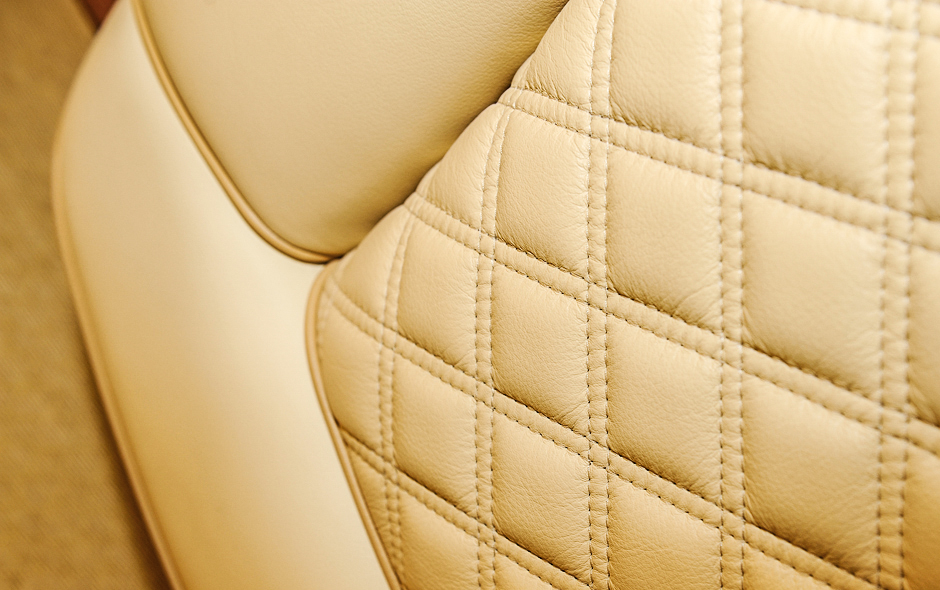
– What is the main difference between you and other consulting companies?
The experience linked to my name. My presence as a player in this market since 1990 but especially my knowledge of the different competitors and subcontractors working in this market. But it is undoubtedly my expertise in the various trades that shape the cabin that remains my strength. My experience acquired since I have been working with highly qualified saddlers and cabinet makers, allows me to be the link between the MRO and the customer. This is what makes Burnet Interiors unique.
But beyond my role of advice, support and project manager, the approach of my job also leads me to be a “translator”. My immersion in recent years through a large European MRO recognized, I realized that often each stakeholder, owner, CAMO, operator and maintenance center, had its own working environment and its own language. This could lead to misunderstandings or misinterpretations in the exchanges between each other. Depending on who you talk to, cabin topics can even be frightening, and can be put aside momentarily until someone else takes care of them. To put aside this kind of subject, only because one does not have the mastery of the subject or that one lacks expertise in the field, is for me a fault. Not everyone can be an “expert” in everything, and the association of skills remains for me the best solution to tackle a problem.
Today, although my consulting activity is only very recent, I think that my business expertise and my consulting approach are heard by my clients.
This is certainly why my last mandate required me to travel more than 5,000 km to do a cabin inspection. An inspection that allowed me to advise the future owner of a GIV-SP, of the aesthetic cabin work necessary to update his cabin to make it more « European”.
– How do MROs and CAMO view your activity ?
The MROs and CAMO appreciate my position because they know my experience on the cabin subject and know that the follow-up will be particularly rigorous. They appreciate the fact that I have a different view of the project, so that they can see the big picture. I facilitate not only the work process but also the communication between all the parties involved, which simplifies their task.
Moreover, it allows them to unload a subject which, once again, is not necessarily well mastered internally by them. It is therefore important for them as well as for the client to feel confident with someone who has a real mastery of the renovation cabin skill and who can anticipate the problems.
– What has been the response to Burnet Interiors’ return to the interior design market?
From the beginning, many people in the industry thought I was coming back with a fitting center and a dedicated team. I had to explain to them that my approach was completely different, even if it was in line with what Burnet Interiors has always been, namely a specialized professional, able to guide and advise its customers in the best possible way in the field of interior design and cabin renovation. This has always been the DNA of Burnet Interiors for over six decades. In short, Burnet Interiors’ return to the market has been very well received.
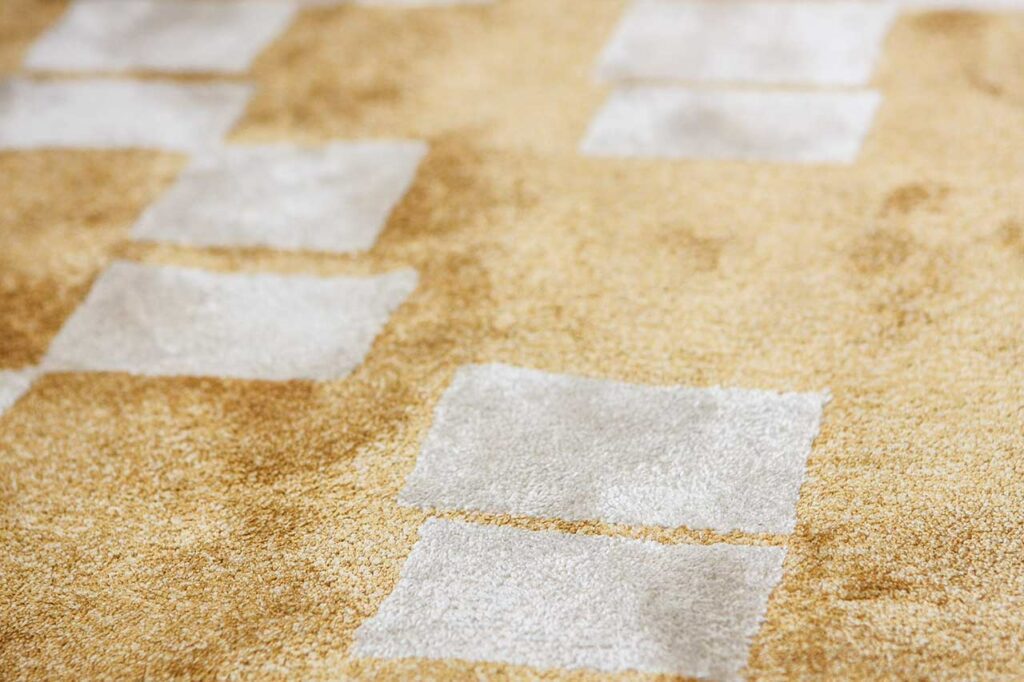
– How do you view the current development and redevelopment industry?
Unfortunately, I don’t think there are enough eyes on this subject. But I only want to talk about the cabin, during the life of the aircraft. Because when it comes to the “new” aircraft, the cabin is taken very seriously and has become, in my humble opinion, over the last 15 years, more and more the focus of customer discussions. And this, with the same questions coming up about the comfort of the seats, the possibility of switching to a night cabin quickly, the possibility of boarding and taking off while continuing one’s phone conversation with one’s cell phone.
Today, when we talk about “aircraft life”, we talk about mechanics, airworthiness, service bulletins, aircraft downtime… and rarely about the cabin. And yet, the owner, the one who gets on the plane and sits in the cabin, is the one who should be at the center of these discussions. He spends a very large part of his time there and is therefore able to talk about it the best to explain what needs to be changed, improved or repaired.
These owners must be accompanied, so that the cabin work is anticipated as well as possible.
These last years have shown me that when the customer and especially the staff in charge of the airworthiness of his aircraft, anticipate its future maintenance phases, it was easy for me to talk about the cabin and to explain to them that some work requires time before this maintenance. This anticipation allowed us to be ready for the arrival of the aircraft and to be able to replace the elements to be changed or renovated (carpet, varnish on woodwork…) in only two weeks. If the discussions could not have been anticipated, and the subject had been brought up even a month before the arrival of the plane, we would not have been able to satisfy the client’s wishes at the risk of having him frustrated. Of course, it’s not all about good project planning. The knowledge of the costs of each service is just as important.
Once again, my position allows me, not to be the inquisitor who will use his knowledge of the workshop hours according to the cabin services, but to be precisely the partner of the MRO and CAMO, to present the future costs of these cabin works. The result is to present the reality of what the cost of the cabin work will be.
At the same time, it is necessary that the stakeholders and the different actors of the sector also take into account that the process of fitting out or renovation can never be linked to a whole system of industrialization. Aircraft maintenance requires technicians who are qualified to work on the type of aircraft and parts, so that they can be replaced, all according to work processes. During a cabin refurbishment, we combine multiple skills from different trades that have often been passed on from man to man, as we meet on site. We are going to associate know-how and allow interaction between engineers and workers so that in the end, what was only an owner’s wish, an idea, a desire, becomes a reality. The industrialization of our cabin trades, and this is only my opinion, will only be possible within the framework of a specific project with a large volume, such as the processing of a fleet of the same operator.
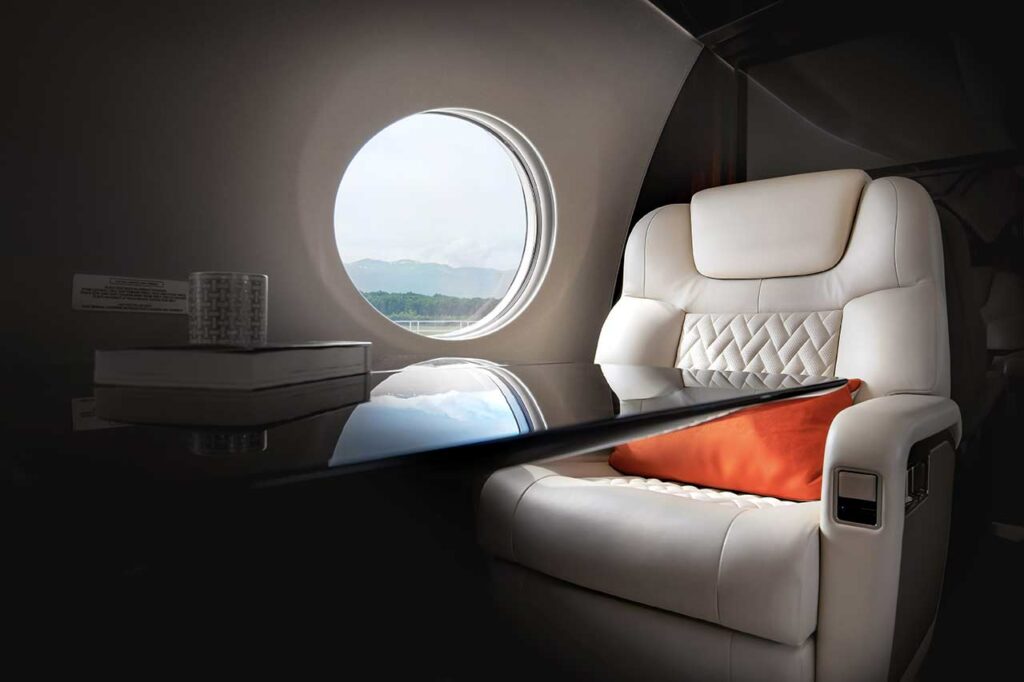
– With a fairly competitive market, has the financial situation in this sector changed since your workshops were shut down?
Competition between maintenance centers has always been tough, but it’s true that since 2008, everything has become a little tighter between the players. From what I have been able to understand of the mechanisms, it would seem that the MROs, without officially talking about it, that in order to maintain their turnover, if the number of projects decreased, they had to act on their quantity.
At this level of reasoning, it is quite simple, but judicious when one masters the two components of the problem. Unfortunately, one of the data is unmanageable by the MRO: the customer. The customer is free to go wherever he wants and this is what, in my opinion, led to the idea of industrializing maintenance and everything that goes with it.
The goal of all maintenance centers was to do more work. And to be competitive, they had to lower their prices in order to attract as many customers as possible. The quantity was certainly there, but it quickly became apparent that project anticipation was becoming the last thing on the agenda, in favor of the numbers.
In addition, a few more layers of actors, such as CAMOs, did not help in the transmission of information and in the transparency towards the customer.
In short, we have gone from an activity that in the 80’s allowed the owner, via his pilot, to discuss with the MRO and the company that was going to carry out his interior work, to an activity with multiple actors and principals. And therefore, in fine, a loss of the link with the owner. In this context, the subject of the cabin has finally been relegated to the background of the professionals involved in aircraft maintenance. Yet the cabin remains the main sales argument for manufacturers. It must therefore be put back at the heart of the imperatives of each of the parties involved.
– After 15 months of activity, how many jobs have you supervised?
I know how to export my skills, but it is mostly the customers who come to me to find the solution to their cabin problem. Word of mouth is and will remain the best means of communication in our industry.
Since the beginning of my activity, I have been mandated to carry out a complete cabin review on two Falcon 2000, in order to have an expert report on the state of these cabins at the moment. This was done with a view to repair work, which would be carried out during a maintenance phase.
The second mandate came at the beginning of the second quarter through the sale of a Falcon 8X which allowed me to follow up the cabin renovation. The project lasted 4 months and was delivered a week early. Currently, I am following up the complete refurbishment of a Falcon 7X also based in Paris. This is a larger project due to the modification of the cabin layout, with the installation of two 3-seater sofas in the rear area of the aircraft. The project will be finished in a few days.
At the same time I supervised two projects, the first of which took me to India to replace the carpets on a Falcon 2000. This project allowed me to use my knowledge of the market players to find the company capable of performing this service, as well as the players behind the scenes who allowed me to meet this client.
The second one, very recent, concerns the accompaniment of an owner who acquired a GIV-SP and who needs my expertise in order to establish the scope of the cabin service, to launch a call for tenders to the MROs, to launch the project, to follow up and to make sure that his wishes are carried out.

– What are the most promising markets today and in which regions?
Today, if I take the projects under discussion, the division of work is as much on light entry-level aircraft, such as the CJ2+, as it is on single-aisle aircraft transformed into business versions.
My spectrum of action is therefore relatively wide. Even if I have a small preference for Falcon and Bombardier aircraft. Geographically, my market is mainly in Europe and the Middle East, as the main maintenance centers are located in these areas.
I have also developed a close relationship with India since my first actions in Bombay. India remains in my opinion a very promising market.
– How do you see the development of Burnet Interiors?
My leitmotiv is to tell my interlocutors that I want to work in total transparency with the actors on the project. But beyond that, at 54 years old, I am especially oriented towards the transmission of my knowledge. I need to pass on my experience, just as I learned from my father and the saddlers and cabinetmakers who made up his company nearly 60 years ago. It is important to prepare the future and especially to continue to keep this spirit of excellence and requirement which make the particularity of the aircrafts.


